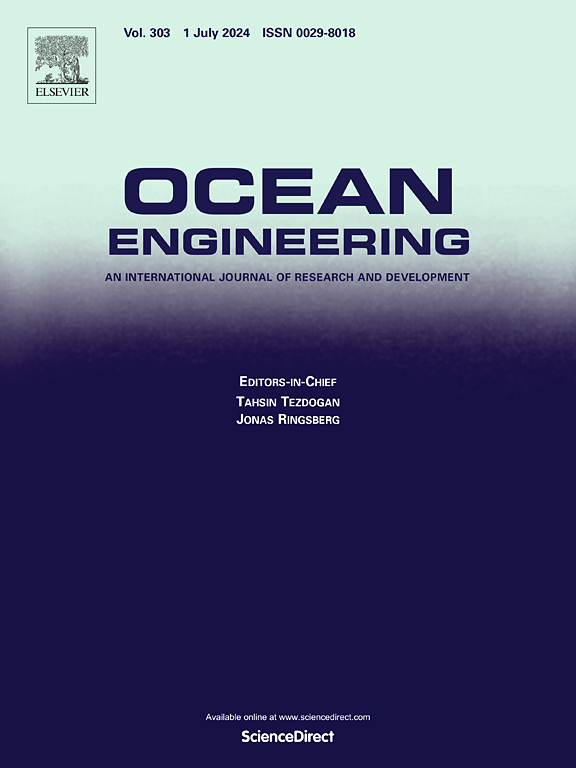Motion prediction of semi-submersibles using time-frequency deep-learning model with input of incident waves
IF 4.6
2区 工程技术
Q1 ENGINEERING, CIVIL
引用次数: 0
Abstract
Machine learning techniques have inspired reduced-order solutions in hydrodynamic response prediction and hold the potential to provide valuable insights for structural design and real-time monitoring. In this study, to improve the feature extraction capability and interpretability, the time-frequency analysis methods were applied to the architectural design of deep learning model, and the incident waves were fed into the time-frequency (TF) model to predict the motions of semi-submersibles subjected to head waves. The training and testing datasets were derived from a scaled model test. Upon validation, the internal visualization demonstrated that the TF model can provide an accurate minute-level prediction with great interpretability. An in-depth analysis of time window selection was conducted to improve the model's performance and stability. Furthermore, multi-step predictions were systematically explored, successfully reconstructing the full 3-h motion time series with an average accuracy exceeding 90% for heave, pitch, and surge. The model's generalization ability was also evaluated under unfamiliar wave conditions and with limited training datasets. It is envisioned that the TF model could be a promising alternative to provide precise and rapid predictions of the hydrodynamic performance of offshore platforms.
求助全文
约1分钟内获得全文
求助全文
来源期刊

Ocean Engineering
工程技术-工程:大洋
CiteScore
7.30
自引率
34.00%
发文量
2379
审稿时长
8.1 months
期刊介绍:
Ocean Engineering provides a medium for the publication of original research and development work in the field of ocean engineering. Ocean Engineering seeks papers in the following topics.
 求助内容:
求助内容: 应助结果提醒方式:
应助结果提醒方式:


